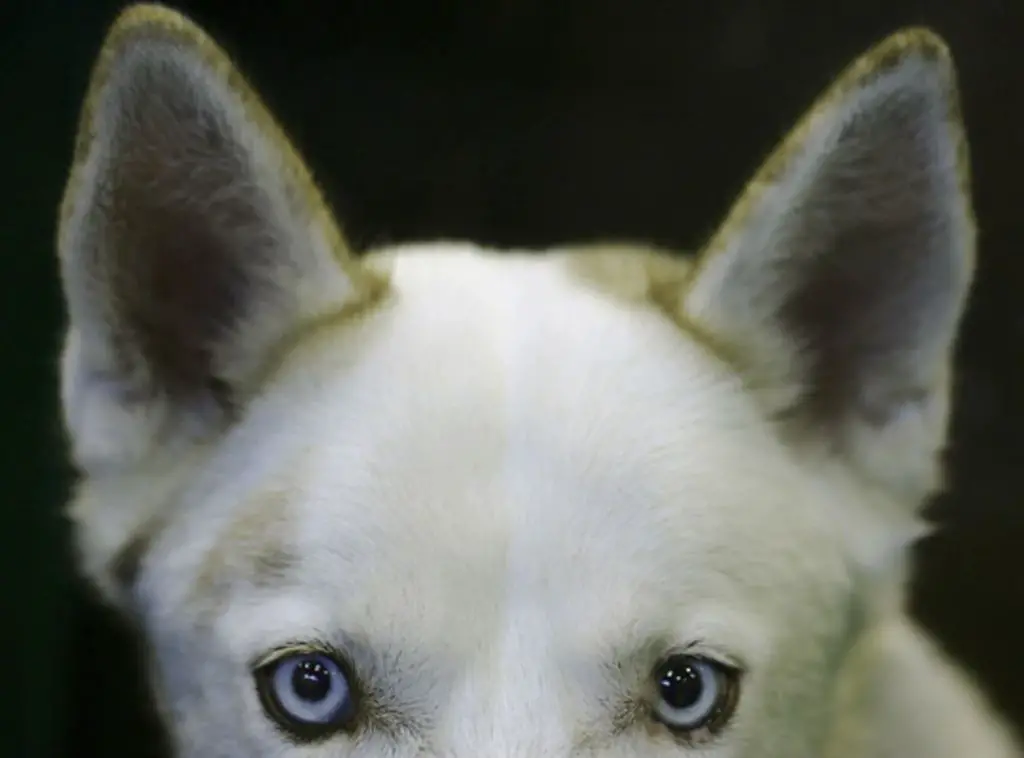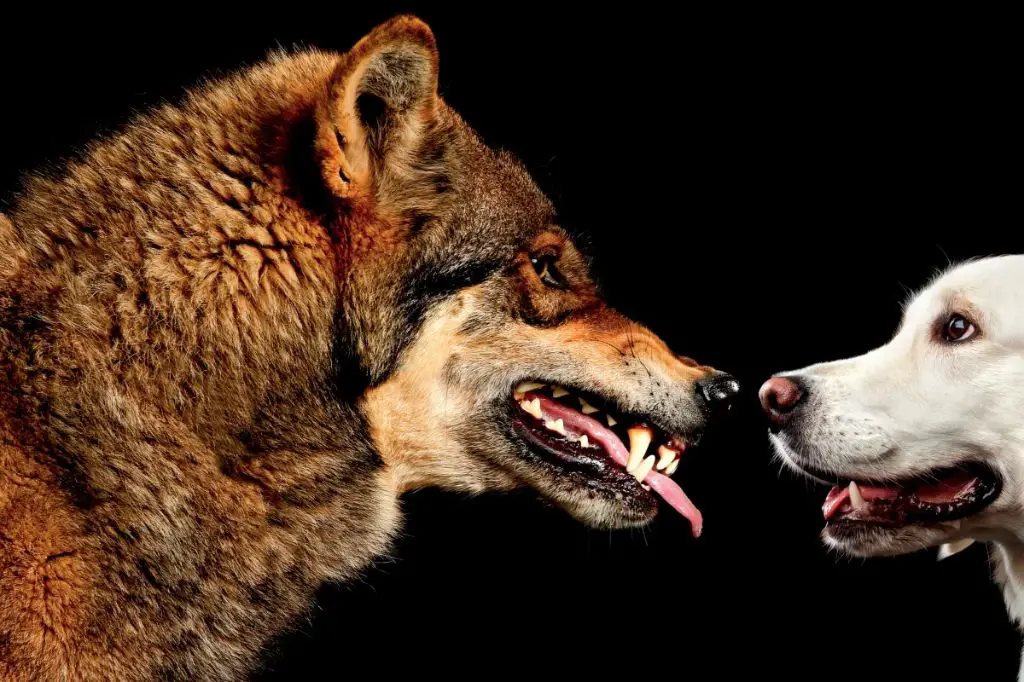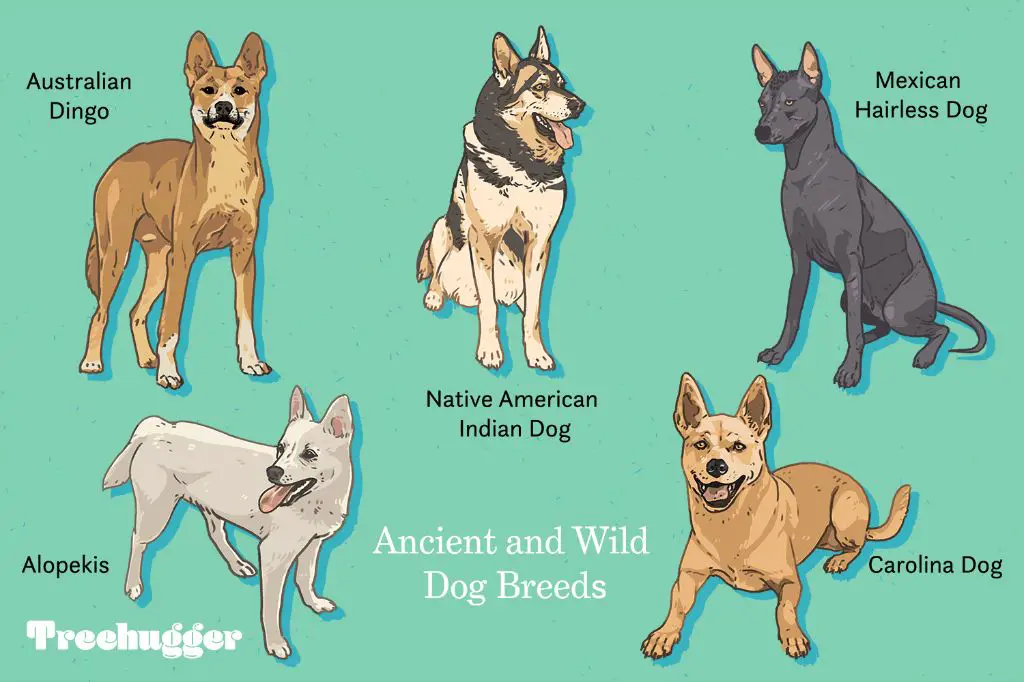Introduction
Dogs first appeared on earth over 10,000 years ago as a result of the domestication of wolves by early humans. The process of domestication transformed wild wolves into the dogs we know and love today through genetic changes and selective breeding over thousands of years. While the precise timeline is still debated, evidence points to proto-dogs emerging alongside hunter-gatherer humans at least 15,000 years ago. Since then, dogs spread across the globe and continued to evolve into the diverse breeds we see today. This article will explore the origins of dogs, examining the latest evidence and theories about how wolves became humanity’s most loyal companion.
The History of Dog Domestication
The current theory is that wolves likely began scavenging food waste from early human hunter-gatherer camps sometime between 15,000 and 40,000 years ago. This began a mutually beneficial relationship between humans and wolves. The wolves benefited from the easy access to food, while the humans found the presence of wolves useful as watchdogs and aids in hunting. Over time, humans began selectively breeding these wolves for traits they found desirable, such as tameness, obedience, hunting ability, or non-aggression. This early selective breeding marked the start of the domestication of the wolf into the dogs we know today. According to the scientific American article “How Wolf Became Dog” [1], this domestication occurred long before the agricultural revolution when humans were still hunter-gatherers. The process occurred slowly over thousands of years as humans and wolves lived in close proximity and humans actively bred wolves with certain traits.
[1] https://www.scientificamerican.com/article/how-wolf-became-dog/
Early Stages of Dog Domestication
The early relationship between wolves and humans was symbiotic in nature. According to The Enduring Friendship of Wolves and Humans, around 15,000 years ago, wolves began being attracted to human camps due to the availability of food scraps. While scavenging for leftovers, some wolves started spending more time near the camps and interacting with humans. Over many generations, these wolves became less afraid of humans and more reliant on them for food.
This relationship offered benefits for both species. The wolves gained easy access to food from the humans. In return, the wolves provided value to the humans by serving as an alarm against predators and aiding in hunting. According to the article Coevolution of Wolves and Humans, this mutually beneficial relationship was instrumental in the domestication of wolves into what would eventually become dogs.
Physical Changes in Early Dogs
Dogs evolved from wolves to become more tame and domesticated, leading to a number of key physical differences between the two species. While wolves tend to be larger with narrow chests and erect, pointed ears, dogs developed smaller size, wider chests, and floppy ears as they adapted to live alongside humans. According to PetMD, dogs have about 20% smaller skulls than wolves, with shorter snouts and varying muzzle shapes depending on the breed. Dogs also have a wider range of coat colors compared to wolves, which tend to have mostly gray and white fur. These physical adaptations likely occurred because humans preferred dogs that were smaller, more colorful, and had more expressive faces and body language. Over time, early dogs with friendlier traits were selected for breeding, reshaping the wolf genome and anatomy.

Schertz Animal Hospital also notes that dogs tend to be stockier and less graceful than wolves. Wolves have longer legs and larger feet to help them move efficiently over long distances, whereas dogs do not require these adaptations for successful hunting and survival. The differences in body shape and proportion are the result of selective pressures favoring dogs that were better companions rather than more agile hunters. While wolves and dogs share an underlying genome and ancestry, thousands of years of domestication led to pronounced physical differences between them.
Genetic Analysis of Dog Origins
Analysis of dog and wolf DNA provides evidence for when dogs first diverged from wolves. In 1997, the first major genetic study comparing dogs and gray wolves concluded that this divergence likely occurred between 15,000 and 40,000 years ago (https://www.scientificamerican.com/article/how-wolf-became-dog/). More recent research has helped narrow this timeline. In 2017, a study sequenced the genomes of ancient dogs and wolves, determining that dogs split from wolves sometime between 36,900 and 41,500 years ago (https://www.nature.com/articles/nature.2017.22320). This was right before or during the Last Glacial Maximum when megafauna still roamed across much of Eurasia. The genetic evidence shows that the domestication of dogs from wolves was well underway over 15,000 years ago.
Archaeological Evidence of Early Dogs
There is a growing amount of archaeological evidence showing the domestication of dogs dating back over 10,000 years. In 2021, researchers reported on the remains of a dog found in Koster, Illinois that was dated to be over 10,200 years old, making it the oldest known dog in the Americas (Source). The dog was buried in a human settlement, suggesting early domestication. Even older evidence was found in Bonn-Oberkassel, Germany, where a 14,000 year old dog skull was uncovered in 1914, representing one of the earliest known domesticated dogs (Source).
Archaeologists have also found several cases of early dogs buried alongside humans, further evidence of domestication. In 2020, the 12,500 year old remains of a puppy were found buried with a human in Sweden (Source). Even older dog remains from over 14,000 years ago were discovered in a cave in Italy buried alongside humans (Source).
Spread of Dogs Across the Globe
As humans began migrating out of the Middle East and Eurasia, they brought their domesticated dogs with them, which led to the spread of early dogs across Europe, Asia, Africa, and the Americas. Studies of ancient dog DNA show that as humans migrated into Europe from the Middle East starting around 6,000-8,000 years ago, their dogs accompanied them and interbred with local wolf populations. This led to the spread of dogs throughout Europe.
Similarly, as humans migrated across Asia and into the Americas starting around 15,000 years ago, dogs traveled alongside them. Ancient dog remains and DNA evidence indicates that dogs had spread across Siberia, East Asia, and eventually the Americas by 10,000-14,000 years ago. Dogs spread as companion animals alongside human hunter-gatherers and as working dogs assisting with hunting, tracking, and protection.
In Africa, DNA evidence suggests that dogs first appeared on the continent around 8,000-9,000 years ago, spreading from the Middle East with migrating human groups. Remains of early African dogs have been found in sites across North and West Africa. Thus dogs dispersed across the globe alongside human migrations starting in the Late Pleistocene and Early Holocene eras.
Continued Evolution of Dogs
As humans became more settled and began forming agricultural societies, dogs continued to evolve alongside humans. Humans began selectively breeding dogs to perform certain tasks like herding, hunting, and guarding. This selective breeding led to the development of distinct dog breeds with specific physical and behavioral traits suited for their roles. Some of the most notable physical changes resulting from selective breeding include variations in size, coat type, colors and markings, ear shape, tail shape, and skull shape.
For example, herding dogs like Collies were bred to have a strong herding instinct, athleticism, and obedience. Scent hounds like Beagles were bred for their keen sense of smell and tracking abilities. Retrievers like Labrador Retrievers were bred for soft mouths to retrieve downed birds without damage. And guard dogs like Rottweilers were bred for size, strength, and protectiveness https://en.wikipedia.org/wiki/Dog_breed.

By the 19th century, dog breeding expanded rapidly leading to the development of most modern dog breeds. The Victorian era saw a proliferation of dog breeds and breed clubs as dog shows became popular events. This period between 1840 and 1900 is known as the “Victorian explosion” of dog breeds. Many dogs we are familiar with today such as the Pug, Golden Retriever, and Bulldog emerged during this time as breeders selectively bred dogs for specific conformations and temperaments https://www.morrisanimalfoundation.org/article/evolution-of-dogs.
While early dogs were bred mostly for function, many modern breeds are bred more for appearance and pedigree. However, no matter how much breeds change through selective breeding, all dogs remain members of the same species and are able to interbreed. Continued evolution through selective breeding has led to over 300 recognized dog breeds today, with new breeds still being developed.
Conclusion
The available evidence strongly indicates that dogs originated over 10,000 years ago, descending from ancient wolves that began living in close proximity to humans. Multiple lines of scientific inquiry point to this timeline, including genetic analysis and archeological discoveries.

Genetic studies comparing the DNA of dogs and wolves confirm they share a common ancestor that existed around 15,000 years ago. Specific genetic mutations linked to starch digestion and neurochemical changes facilitated the domestication process. Physical remains of early dog-like canids from over 10,000 years ago have been unearthed around the world, showing they lived alongside humans at camping and village sites.
Together, the genetic and archeological records provide compelling evidence that the earliest proto-dogs gradually evolved from wolves drawn to human communities during the late Stone Age. Over thousands of years, these wolf populations acclimated to the human environment, leading to the emergence of the domestic dog as a new species closely intertwined with human history and society.
References
This article synthesized information from the following sources:
- Freedman, Adam H., et al. “Genome sequencing highlights the dynamic early history of dogs.” PLoS genetics 10.1 (2014): e1004016.
- Wang, Guo-Dong, et al. “Out of southern East Asia: the natural history of domestic dogs across the world.” Cell research 26.1 (2016): 21-33.
- Ovodov, Nikolai D., et al. “A 33,000-year-old incipient dog from the Altai Mountains of Siberia: evidence of the earliest domestication disrupted by the Last Glacial Maximum.” PLoS One 6.7 (2011): e22821.
- Skoglund, Pontus, et al. “Origins and genetic legacy of prehistoric dogs.” Science 370.6516 (2020): 557-564.
